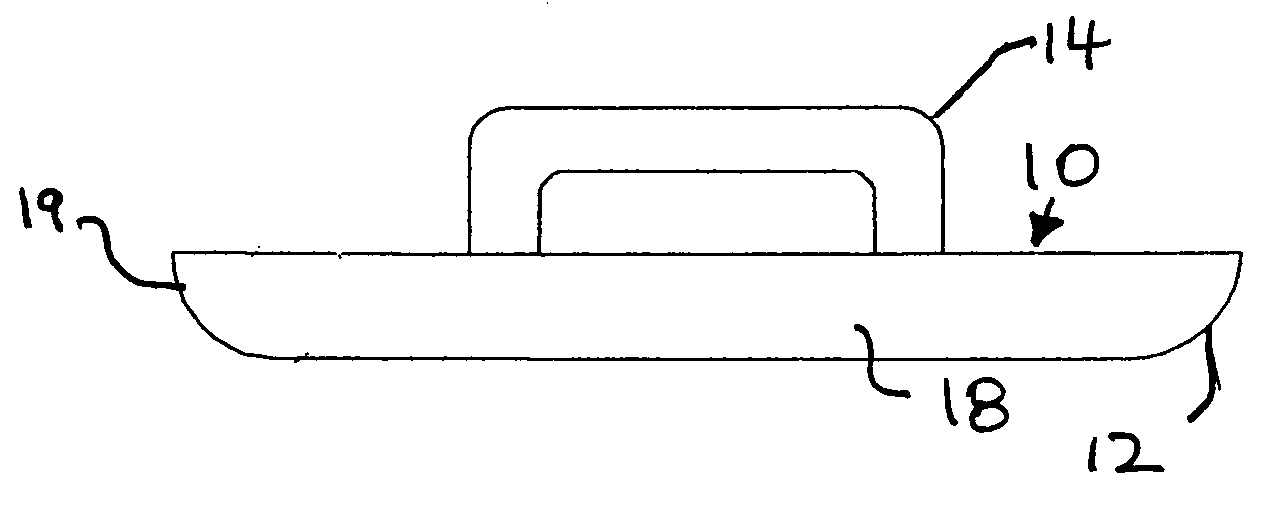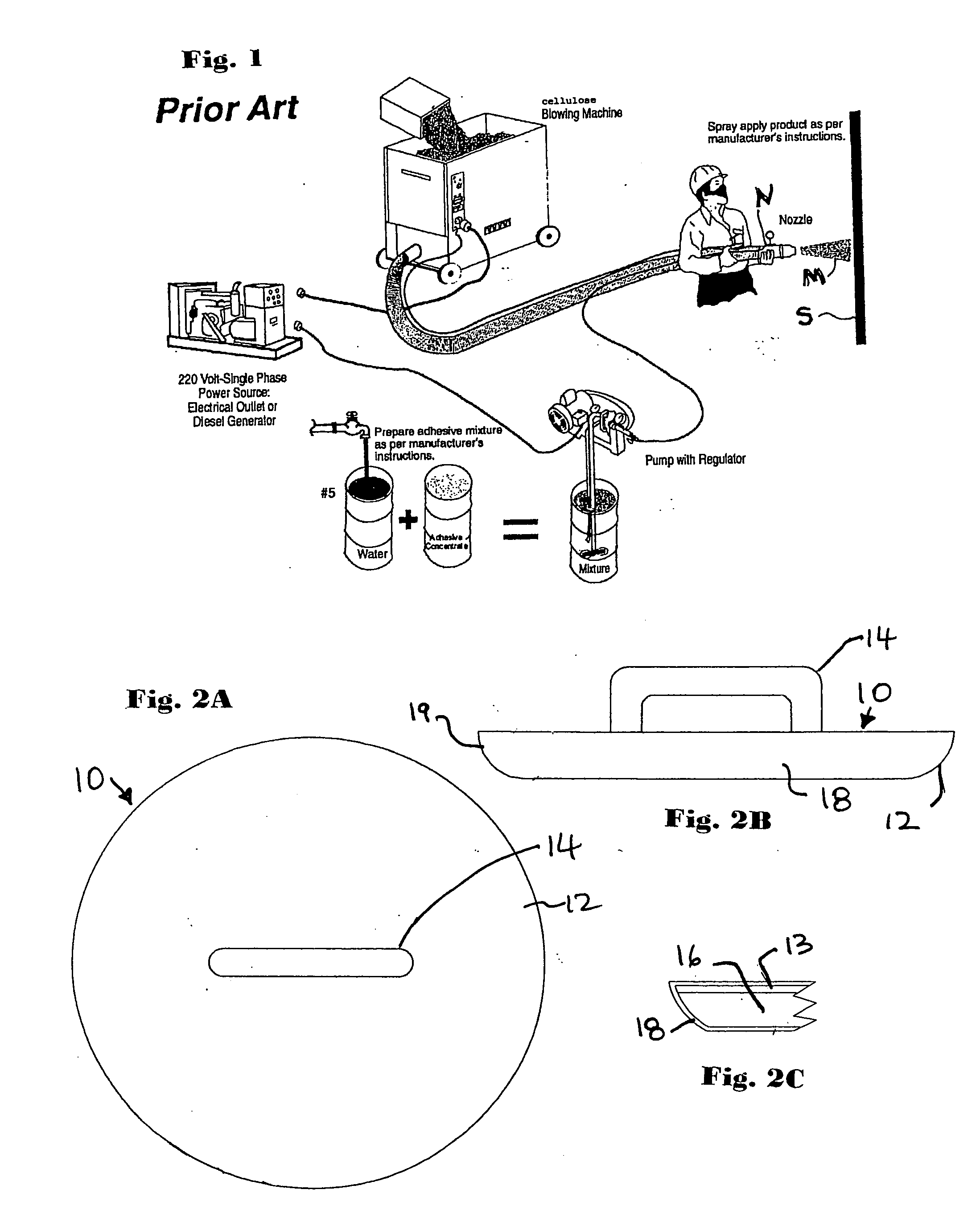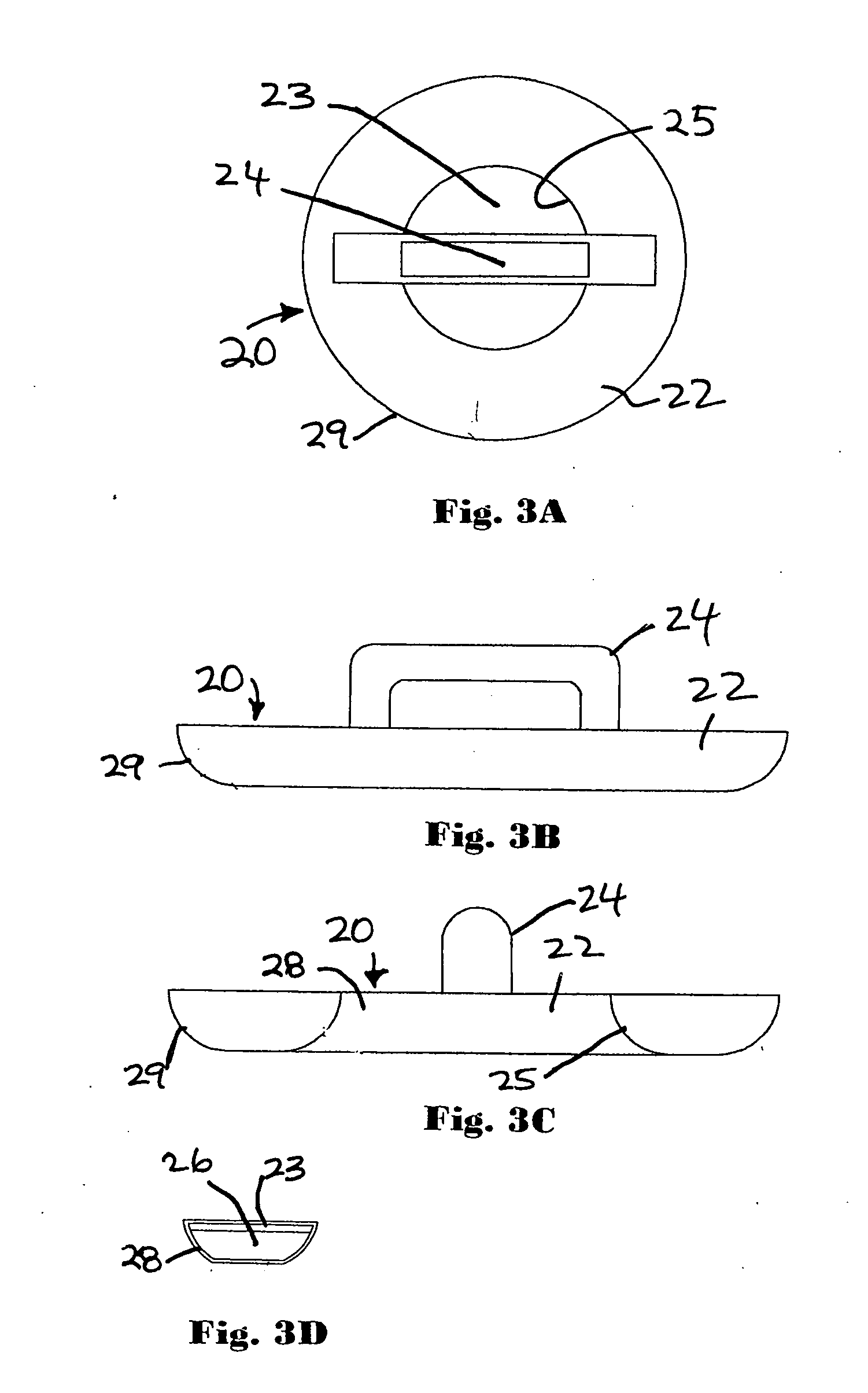Methods for aesthetic applied cellulose material
a cellulose material and aesthetic technology, applied in the field of cellulose materials, can solve the problems of unsuitable for many uses, difficult to achieve the effect of smoothing the surface of the material, and reducing the total number of tool passes
- Summary
- Abstract
- Description
- Claims
- Application Information
AI Technical Summary
Benefits of technology
Problems solved by technology
Method used
Image
Examples
Embodiment Construction
[0029]FIG. 1 shows one typical prior art system for spraying cellulose material M through a nozzle apparatus N onto a substrate S.
[0030]FIGS. 2A, 2B and 2C show a finishing tool 10 according to the present invention which has a base 12 with a base member 13, a handle 14, a foam layer 16 (optional as is any foam or cushion layer or portion herein) and a vinyl covering 18. The handle 14 (as may be any handle of any embodiment herein) may be a separate piece connected to the base 12 or it may be formed integrally of the base 12. The foam layer (as may be any foam or cushion layer or portion of any embodiment herein) may be connected to the base with fasteners (e.g., but not limited to screws, brads, or staples) and / or it may be glued or adhered to the base 12. Although it is within the scope of the present invention to have a base with squared edges, the base 12 as shown has a curved outer edge 19.
[0031]FIGS. 3A-3D show a finishing tool 20 according to the present invention which has...
PUM
| Property | Measurement | Unit |
|---|---|---|
| thickness | aaaaa | aaaaa |
| thickness | aaaaa | aaaaa |
| thick | aaaaa | aaaaa |
Abstract
Description
Claims
Application Information
 Login to View More
Login to View More - R&D
- Intellectual Property
- Life Sciences
- Materials
- Tech Scout
- Unparalleled Data Quality
- Higher Quality Content
- 60% Fewer Hallucinations
Browse by: Latest US Patents, China's latest patents, Technical Efficacy Thesaurus, Application Domain, Technology Topic, Popular Technical Reports.
© 2025 PatSnap. All rights reserved.Legal|Privacy policy|Modern Slavery Act Transparency Statement|Sitemap|About US| Contact US: help@patsnap.com



